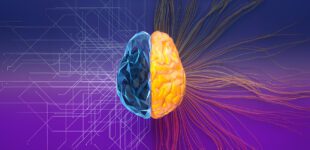August 4, 2022
Digital twins were first conceived by NASA in the 1960s when the organization would create physically duplicated systems at ground level to match systems in space.
“However, it wasn’t until recent advances in innovative technologies – such as internet of things (IoT) devices for pulling massive amounts of data – that digital twins began to truly mature,” said Todd Richmond, IEEE Member.
Now, Gartner predicts that the digital twin market will reach US$183 billion in revenue by 2031.
And it is easy to see why when one considers that the world’s foremost companies in a variety of industries are leveraging digital twin technologies to optimize…well, everything.
But what exactly is a digital twin, anyway?
And, more importantly, what can a digital twin do?
What Is a Digital Twin?
According to Paulo Miyagi, IEEE Senior Member, a digital twin is, in essence, “an exact digital replica of an object or system existing in the physical world that is constantly updated with real-time data to inform decision making.”
To achieve this, the object or system in question is outfitted with various IoT devices that serve as sensors to produce data related to performance – for example, in the case of a wind turbine, sensors are utilized to source data focusing on energy output, temperature, weather conditions, performance and more.
Once this data has been captured, a digital twin can be utilized to run simulations to better understand issues related to performance and generate valuable insights that can, in turn, be applied back to the analog object or system.
“Digital twins provide a way to ask ‘what if/why not’ questions of an object or system,” said Richmond. “By utilizing a combination of visualization, simulation and internet of things technologies, digital twin technologies enable us to glean insights into objects and systems in unprecedented ways.”
Why Are Digital Twins Valuable?
“Digital twins are among the most powerful digital transformation innovations for bridging the information gap between the physical and virtual worlds, helping businesses to quickly identify and execute on the innovations needed to thrive.”
Amol Gulhane
IEEE Senior Member
Indeed, McKinsey estimates that digital twin technologies can drive a revenue increase of up to 10%, accelerate time to market by as much as 50% and improve product quality by up to 25%.
Gulhane highlighted three prominent sectors where digital twins are already being applied to great effect:
- Manufacturing – Leveraged by leading manufacturers, digital twins are a core component of Industry 4.0 that help to enable the continuous optimization of manufacturing processes throughout the product lifecycle. In particular, digital twins of factories are utilized to enhance the management of production flows, predictive maintenance, workforce safety and more.
- Transportation – Digital replicas of complex transportation systems can help researchers and developers to better understand, create and manage the infrastructure responsible for moving people and goods from Point A to Point B. For example, major airports around the world have begun applying digital twin technologies to create holistic views of their operations, enabling the optimization of everything from traffic control to baggage handling for improved operational efficiency.
- Life Sciences – As researchers raced to develop safe and effective vaccines to combat COVID, manufacturing planners leveraged digital twins to simulate industrial processes, supply chains and logistics so that production could be scaled up quickly and efficiently.
The proliferation of digital twin technologies is poised to continue, as there is great value in being able to better understand physical objects and systems without having to run costly analyses.
What Does the Future Hold for Digital Twins?
IEEE Senior Member Roberto Saracco believes that digital twins will be increasingly leveraged moving forward to help address some of the most pressing challenges facing our world.
“The pandemic’s impact on global supply chains have highlighted logistics challenges that must be addressed if we’re to avoid future disruptions,” said Saracco. “It is reasonable to believe that digital twins, empowered by machine learning, internet of things devices, data lakes, automation, and other disruptive technologies, will play a role in redefining how we move things – and people – from one place to another.
Gulhane believes that digital twins maintain virtually limitless potential.
“Increasing amounts of cognitive power are being devoted to digital twins’ use,” said Gulhane. “Digital twin technologies are also going to be optimized in the future through advances in other emerging technologies, which will help to generate the new insights required to make products and processes more efficient.”
Learn More:
If you would like to learn more about the growing use of digital twins, the challenges in using them, and the technologies that enable them, IEEE Access has you covered: “Digital Twins: Values, Challenges, and Enablers From a Modeling Perspective.”





 Meaningful Momentum or Running in Place?
Meaningful Momentum or Running in Place? AI Through Our Ages
AI Through Our Ages Liquid Infrastructure: Our Planet's Most Precious Resource
Liquid Infrastructure: Our Planet's Most Precious Resource The Impact of Technology in 2025
The Impact of Technology in 2025 Quantum and AI: Safeguards or Threats to Cybersecurity?
Quantum and AI: Safeguards or Threats to Cybersecurity? Why AI Can't Live Without Us
Why AI Can't Live Without Us Bits, Bytes, Buildings and Bridges: Digital-Driven Infrastructure
Bits, Bytes, Buildings and Bridges: Digital-Driven Infrastructure Impact of Technology in 2024
Impact of Technology in 2024 Emerging AI Cybersecurity Challenges and Solutions
Emerging AI Cybersecurity Challenges and Solutions The Skies are Unlimited
The Skies are Unlimited Smart Cities 2030: How Tech is Reshaping Urbanscapes
Smart Cities 2030: How Tech is Reshaping Urbanscapes Impact of Technology 2023
Impact of Technology 2023 Cybersecurity for Life-Changing Innovations
Cybersecurity for Life-Changing Innovations Smarter Wearables Healthier Life
Smarter Wearables Healthier Life Infrastructure In Motion
Infrastructure In Motion The Impact of Tech in 2022 and Beyond
The Impact of Tech in 2022 and Beyond Cybersecurity, Technology and Protecting Our World
Cybersecurity, Technology and Protecting Our World How Technology Helps us Understand Our Health and Wellness
How Technology Helps us Understand Our Health and Wellness The Resilience of Humanity
The Resilience of Humanity Harnessing and Sustaining our Natural Resources
Harnessing and Sustaining our Natural Resources Creating Healthy Spaces Through Technology
Creating Healthy Spaces Through Technology Exceptional Infrastructure Challenges, Technology and Humanity
Exceptional Infrastructure Challenges, Technology and Humanity The Global Impact of IEEE's 802 Standards
The Global Impact of IEEE's 802 Standards Scenes of our Cyber Lives: The Security Threats and Technology Solutions Protecting Us
Scenes of our Cyber Lives: The Security Threats and Technology Solutions Protecting Us How Millennial Parents are Embracing Health and Wellness Technologies for Their Generation Alpha Kids
How Millennial Parents are Embracing Health and Wellness Technologies for Their Generation Alpha Kids Space Exploration, Technology and Our Lives
Space Exploration, Technology and Our Lives Global Innovation and the Environment
Global Innovation and the Environment How Technology, Privacy and Security are Changing Each Other (And Us)
How Technology, Privacy and Security are Changing Each Other (And Us) Find us in booth 31506, LVCC South Hall 3 and experience the Technology Moon Walk
Find us in booth 31506, LVCC South Hall 3 and experience the Technology Moon Walk Virtual and Mixed Reality
Virtual and Mixed Reality How Robots are Improving our Health
How Robots are Improving our Health IEEE Experts and the Robots They are Teaching
IEEE Experts and the Robots They are Teaching See how millennial parents around the world see AI impacting the lives of their tech-infused offspring
See how millennial parents around the world see AI impacting the lives of their tech-infused offspring Take the journey from farm to table and learn how IoT will help us reach the rising demand for food production
Take the journey from farm to table and learn how IoT will help us reach the rising demand for food production Watch technical experts discuss the latest cyber threats
Watch technical experts discuss the latest cyber threats Explore how researchers, teachers, explorers, healthcare and medical professionals use immersive technologies
Explore how researchers, teachers, explorers, healthcare and medical professionals use immersive technologies Follow the timeline to see how Generation AI will be impacted by technology
Follow the timeline to see how Generation AI will be impacted by technology Learn how your IoT data can be used by experiencing a day in a connected life
Learn how your IoT data can be used by experiencing a day in a connected life Listen to technical experts discuss the biggest security threats today
Listen to technical experts discuss the biggest security threats today See how tech has influenced and evolved with the Games
See how tech has influenced and evolved with the Games Enter our virtual home to explore the IoT (Internet of Things) technologies
Enter our virtual home to explore the IoT (Internet of Things) technologies Explore an interactive map showcasing exciting innovations in robotics
Explore an interactive map showcasing exciting innovations in robotics Interactively explore A.I. in recent Hollywood movies
Interactively explore A.I. in recent Hollywood movies Get immersed in technologies that will improve patients' lives
Get immersed in technologies that will improve patients' lives